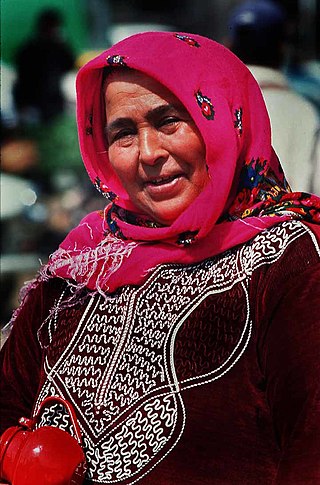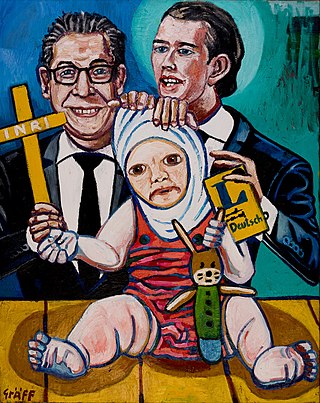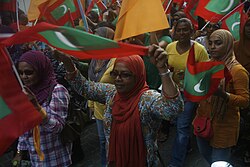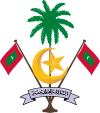
In modern usage, hijab generally refers to various head coverings conventionally worn by many Muslim women. It is similar to the tichel or snood worn by Orthodox Jewish women, certain headcoverings worn by some Christian women, such as the mantilla, apostolnik and wimple, and the dupatta worn by many Hindu and Sikh women. Whilst a hijab can come in many forms, it often specifically refers to a scarf wrapped around the head, covering the hair, neck and ears but leaving the face visible. The use of the hijab has been on the rise worldwide since the 1970s and is viewed by many Muslims as expressing modesty and faith; it has also been worn for purposes of adornment. When it comes to the obligation for a Muslim woman to cover her hair and body, many have expressed confusion about the origin of this commandment. However, there has never been any debate within Sunni Islamic scholarship at any point in history regarding the obligation of hijab for all Muslim women who have reached the age of puberty.

Pardah or purdah is a religious and social practice of gender partition prevalent among some Muslim and Hindu communities. It takes two forms: social partition of the sexes and the requirement that women cover their bodies so as to cover their skin and conceal their form. A woman who practices purdah can be referred to as pardanashin or purdahnishan. The term purdah is sometimes applied to similar practices in other parts of the world.
Throughout history, women in Iran have played numerous roles, and contributed in many ways, to Iranian society. Historically, tradition maintained that women be confined to their homes to manage the household and raise children. During the Pahlavi era, there was a drastic social change towards women's desegregation such as ban of the veil, right to vote, right to education, equal salaries for men and women, and the right to hold public office. Women were active participants in the Islamic Revolution. Iran's constitution, adopted after the Islamic Revolution in 1979, proclaims equality for men and women under Article 20, while mandating legal code adhering to Sharia law. Article 21 of the constitution as well as a few parliament-passed laws give women rights such as being allowed to drive, hold public office, and attend university but not wearing a veil in public can be punished by law; and when in public, all hair and skin except the face and hands must be covered. However, this is often not enforced; notably in recent years, Iranian women have started a number of groups to rebel against the government's oppressive policies and reclaim their independence and rights.
Islamic feminism is a form of feminism concerned with the role of women in Islam. It aims for the full equality of all Muslims, regardless of gender, in public and private life. Islamic feminists advocate for women's rights, gender equality, and social justice grounded in an Islamic framework. Although rooted in Islam, the movement's pioneers have also utilized secular, Western, or otherwise non-Muslim feminist discourses, and have recognized the role of Islamic feminism as part of an integrated global feminist movement.

The culture of the Maldives is derived from a number of sources, the most important of which is its proximity to the shores of Sri Lanka and South India. The population is mainly Indo-Aryan from the anthropological point of view. Islam is considered the religion of the country and only Muslims can become legal citizens.

Street harassment is a form of harassment, primarily sexual harassment that consists of unwanted sexualised comments, provocative gestures, honking, wolf-whistlings, indecent exposures, stalking, persistent sexual advances, and touching by strangers, in public areas such as streets, shopping malls and public transportation. Besides actions or comments that contain a sexual connotation, it often includes homophobic and transphobic slurs, and hateful comments referencing race, religion, class, ethnicity and disability. The practice is rooted in power and control and is often a reflection of societal discrimination, and has been argued to sometimes result from a lack of opportunities for expression of interest or affection.

The experiences of Muslim women vary widely between and within different societies. At the same time, their adherence to Islam is a shared factor that affects their lives to a varying degree and gives them a common identity that may serve to bridge the wide cultural, social, and economic differences between them.
During the late 20th and early 21st centuries in Iran, women's rights have been severely restricted, compared with those in most developed nations. The World Economic Forum's 2017 Global Gender Gap Report ranked Iran 140, out of 144 countries, for gender parity. In 2017, in Iran, females comprised just 19% of the paid workforce, with seven percent growth since 1990. In 2017, the Georgetown Institute for Women, Peace and Security (WPS) Index ranked Iran in the bottom tercile of 153 countries. Compared to other South Asian regions, women in Iran have a better access to financial accounts, education, and cellphones. Iran was ranked 116, out of the 153 countries, in terms of legal discrimination against women.

Women's rights in Saudi Arabia is a topic of concern and controversy internationally. Women in Saudi Arabia experience widespread discrimination in Saudi politics, economy and society.

Women got full political participation rights in Turkey, including the right to vote and the right to run for officelocally in 1930. Article 10 of the Turkish Constitution bans any discrimination, state or private, on the grounds of sex. It is the first country to have a woman as the President of its Constitutional Court. Article 41 of the Turkish Constitution reads that the family is "based on equality between spouses".
Feminism in Egypt has involved a number of social and political groups throughout its history. Although Egypt has in many respects been a forerunner in matters of reform particularly "in developing movements of nationalism, of resistance to imperialism and of feminism," its development in fighting for equality for women and their rights has not been easy.

Various styles of head coverings, most notably the khimar, hijab, chador, niqab, paranja, yashmak, tudong, shayla, safseri, carşaf, haik, dupatta, boshiya and burqa, are worn by Muslim women around the world, where the practice varies from mandatory to optional or restricted in different majority Muslim and non-Muslim countries.

The women of Kuwait have experienced many progressive changes since the early 20th century. Since then, women have had increased access to education, gained political and economic rights, and financial power. They can serve in the police, military, and as judges in courts. However, women in Kuwait struggle against a patriarchal culture which discriminates against them in several fields. Kuwait's Bedoon (stateless) women are at risk of significant human rights abuses and persecution, Kuwait has the largest number of Bedoon in the entire region.

Women in Brunei are women living in Brunei Darussalam. The U.S. Department of State has stated that discrimination against women is a problem in Brunei.

On 8 January 1936, Reza Shah of Iran (Persia) issued a decree known as Kashf-e hijab banning all Islamic veils, an edict that was swiftly and forcefully implemented. The government also banned many types of male traditional clothing.

Aneesa Ahmed is a Maldivian women's rights activist who was also the first speaker(vice) of People's Majilis from 2004 to 2009.

Islamic Fashion as a phenomenon stemmed from the combination of a set of Islamic practices and of the rising need and desire to include these specific clothing items in a broader fashion industry. The global growth of “an Islamic consumer sector, which explicitly forges links between religiosity and fashion, encouraging Muslims to be both covered and fashionable, modest and beautiful,” is relatively fresh: Islamic Fashion as a particular phenomenon started appearing toward the 1980s.

Rashida Yousuf is a Maldivian politician and diplomat.

Hijabophobia is a type of religious and cultural discrimination against Muslim women who wear the hijab. The discrimination has had manifestations in public, working and educational places.

On International Women's Day on March 8, 1979, a women's march took place in Tehran in Iran. The march was originally intended to celebrate the International Women's Day, but transformed into massive protests against the changes taking place in women's rights during the Iranian revolution, specifically the introduction of mandatory hijab (veiling), which had been announced the day before. The protests lasted for six days, from 8 March to 14 March 1979, with thousands of women participating. The protests were met with violence and intimidation by pro-Khomeini Islamist forces.

















